Discover 9 hidden attractions, cool sights, and unusual things to do in North Berwick (United Kingdom). Don't miss out on these must-see attractions: Tantallon Castle, Scottish Seabird Centre, and North Berwick Law. Also, be sure to include National Museum of Flight in your itinerary.
Below, you can find the list of the most amazing places you should visit in North Berwick (Scotland).
Table of Contents
Tantallon Castle
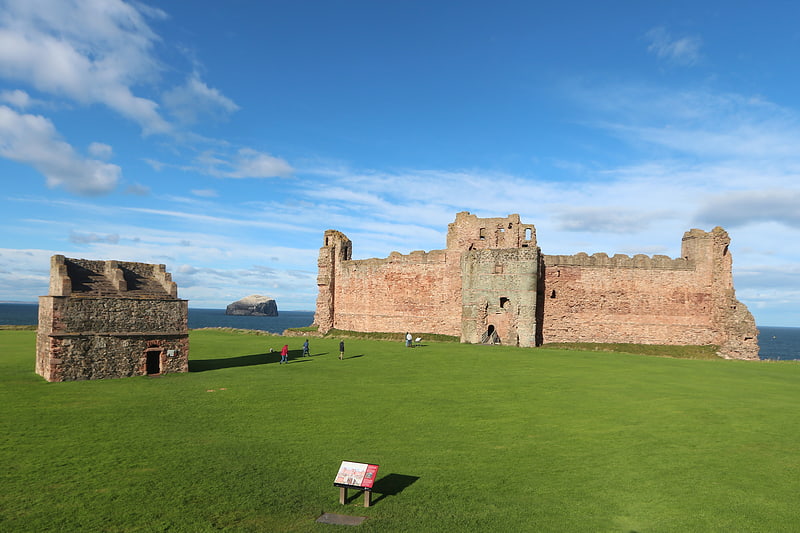
14th-century castle ruins with tower. Tantallon Castle is a ruined mid-14th-century fortress, located 5 kilometres east of North Berwick, in East Lothian, Scotland. It sits atop a promontory opposite the Bass Rock, looking out onto the Firth of Forth. The last medieval curtain wall castle to be constructed in Scotland, Tantallon comprises a single wall blocking off the headland, with the other three sides naturally protected by sea cliffs.
Tantallon was built in the mid 14th century by William Douglas, 1st Earl of Douglas. It was passed to his illegitimate son, George Douglas, later created Earl of Angus, and despite several sieges, it remained the property of his descendants for much of its history. It was besieged by King James IV in 1491, and again by his successor James V in 1527, when extensive damage was done. Tantallon saw action in the First Bishops' War in 1639, and again during Oliver Cromwell's invasion of Scotland in 1651, when it was once more severely damaged. It was sold by the Marquis of Douglas in 1699 to Hew Dalrymple, Lord North Berwick and the ruin is today in the care of Historic Environment Scotland.[1]
Address: Tantallon Castle, EH39 5PN North Berwick
Scottish Seabird Centre

Tourist attraction in North Berwick. The Scottish Seabird Centre is a marine conservation and education charity, that is supported by a 5 star visitor attraction in North Berwick, East Lothian, Scotland. Opened by HRH Duke of Rothesay in 2000 and funded by the Millennium Commission. The showpiece of the centre is the interactive live cameras out to the wildlife on the Firth of Forth islands, including Bass Rock, Isle of May, Fidra and Craigleith. The Bass Rock is the world's largest colony of Northern gannets with an estimated 150,000 birds present.[2]
Address: The Harbour, EH39 4SS North Berwick
North Berwick Law
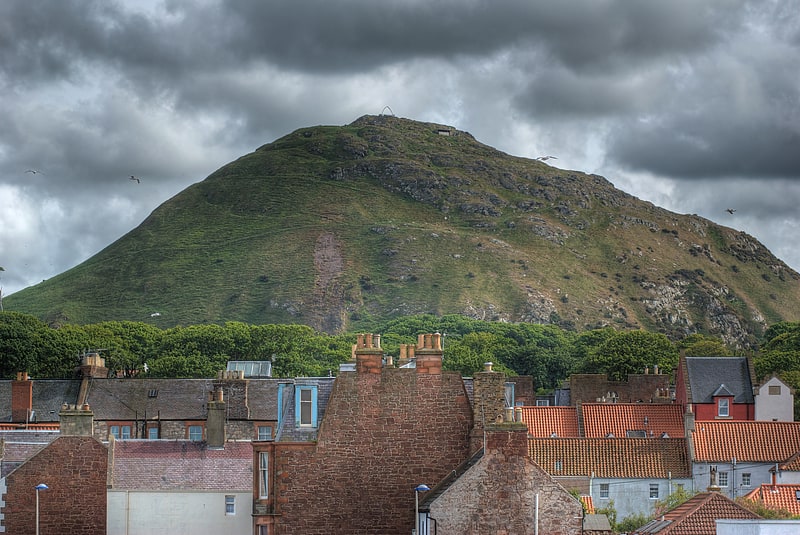
Landmark hill with striking panoramas. North Berwick Law, sometimes abbreviated to Berwick Law, is a conical hill which rises conspicuously from the surrounding landscape. It overlooks the East Lothian town of North Berwick, Scotland, and stands at 613 ft above sea level.
It is considerably steeper (1:1 gradient) on its north side.[3]
Address: Located next to Law Primary School and North Berwick Sports Centre, North Berwick
National Museum of Flight
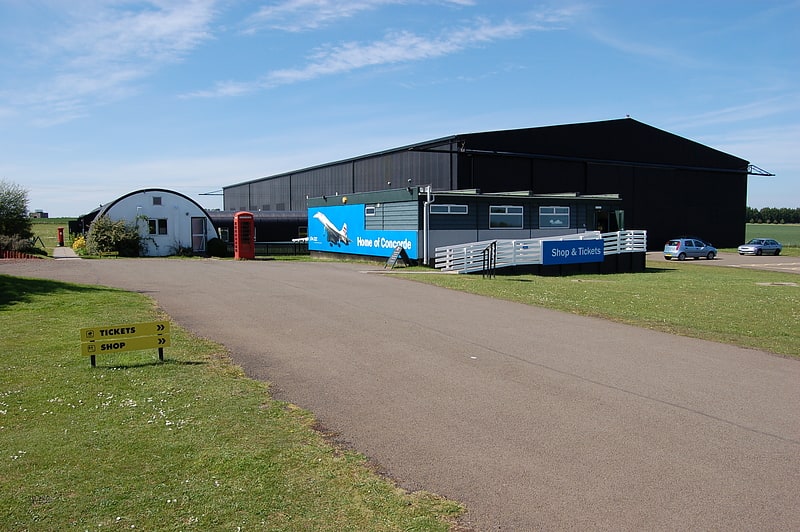
Museum in Scotland. The National Museum of Flight is Scotland's national aviation museum, at East Fortune Airfield, just south of the village of East Fortune, Scotland. It is one of the museums within National Museums Scotland. The museum is housed in the original wartime buildings of RAF East Fortune which is a well preserved World War II airfield. As a result of this the entire site is a scheduled monument with no permanent structures added by the museum. The hangars, control tower and stores were designated as Category B listed buildings by Historic Scotland, but this designation was removed in 2013 as they were already covered by the stricter scheduling.[4]
Address: East Fortune Airfield, EH39 5LF East Lothian
Auldhame Castle
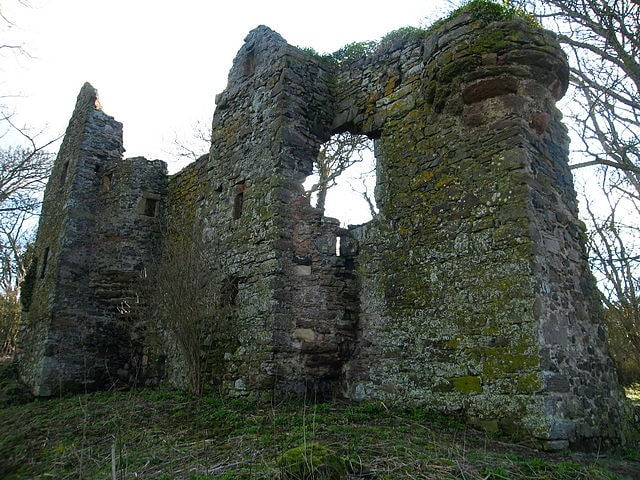
Historical landmark in Auldhame & Scoughall, Scotland. Auldhame Castle is a ruined L-plan tower house standing on a ridge above Seacliff beach, about 3 miles east of North Berwick in East Lothian, and less than half a mile from Tantallon Castle. The castle was built in the 16th century, probably by Adam Otterburn of Reidhall, Lord Provost of Edinburgh. It consists of a three-storey main block with a projecting stair-tower. Part of a vaulted basement remains, but the upper floors are mostly gone.
One of the three supposed corpses of Saint Baldred of Tyninghame was said to have been buried at the site in 756. A cemetery site in an adjoining field was excavated in 2008, the remains of at least 326 individual skeletons were noted, plus the foundations of a probable chapel with an estimated 9th century date (based on comparisons with similar structures).[5]
St. Mary's Priory
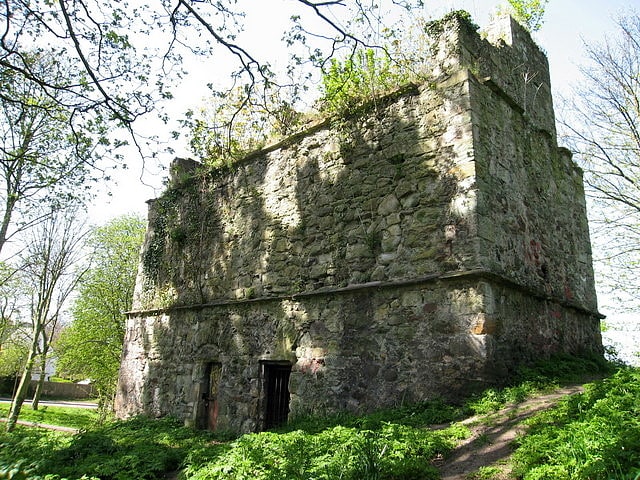
Monastery. St. Mary's Priory, North Berwick, was a monastery of nuns in medieval East Lothian, Scotland. Founded by Donnchad I, Earl of Fife around 1150, the priory lasted for more than four centuries, declining and disappearing after the Scottish Reformation. It had been endowed by the Earls of Carrick as well as the Earls of Fife, but over time lost its dependence on these and came to be controlled by the more locally based Home family, who eventually acquired the priory's lands as a free barony.[6]
Seacliff
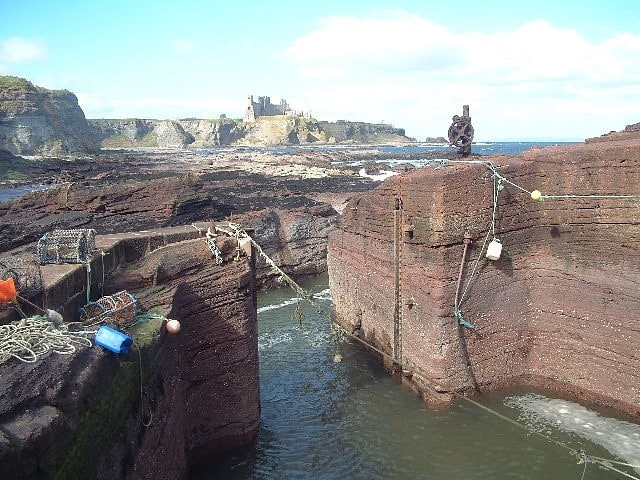
Beach in the United Kingdom. Seacliff comprises a beach, an estate and a harbour. It lies 4 miles east of North Berwick, East Lothian, Scotland.[7]
Dirleton Castle
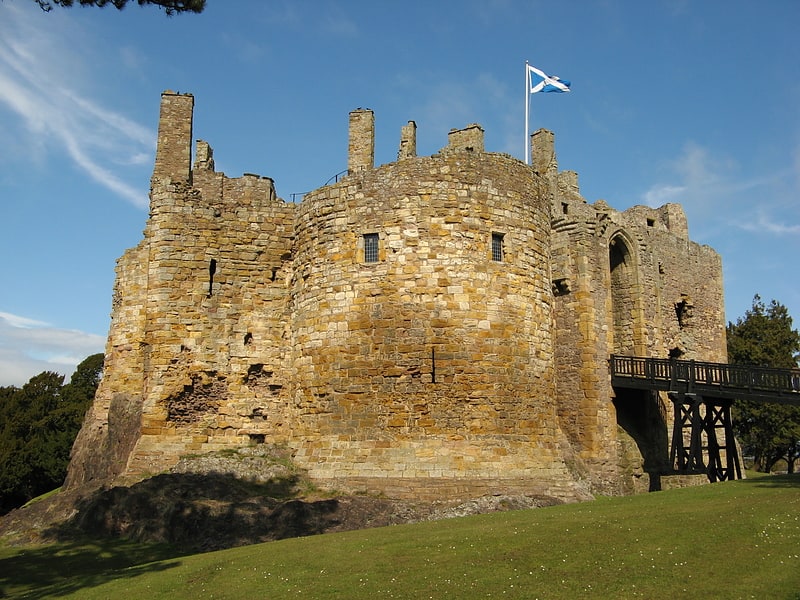
Fortress in Dirleton, Scotland. Dirleton Castle is a medieval fortress in the village of Dirleton, East Lothian, Scotland. It lies around 2 miles west of North Berwick, and around 19 miles east of Edinburgh. The oldest parts of the castle date to the 13th century, and it was abandoned by the end of the 17th century.
Begun in around 1240 by John De Vaux, the castle was heavily damaged during the Wars of Scottish Independence, when it was twice taken by the English. In the 14th century, Dirleton was repaired by the Haliburton family, and it was acquired by the Ruthvens in 1505. The Ruthvens were involved in several plots against Mary, Queen of Scots, and King James VI, and eventually forfeited the castle in 1600. Dirleton ceased to be a residence, although Oliver Cromwell was forced to besiege the castle to flush out a band of "mosstroopers" (marauders), during the Third English Civil War in 1650. The damaged castle was then acquired by John Nisbet, Lord Dirleton, who decided to build a new country house on the nearby Archerfield Estate. The Nisbet family of Dirleton continued to maintain the castle's gardens, before handing Dirleton into state care in 1923. The ruins and gardens are now maintained by Historic Environment Scotland.
Dirleton Castle stands on a rocky outcrop, at the heart of the rich agricultural lands of the barony of Dirleton, and guards the coastal approach to Edinburgh from England, via the port of North Berwick. The ruins comprise a 13th-century keep, and a 16th-century house which the Ruthvens built adjacent. Only the basement levels survive of the 14th- and 15th-century additions built by the Haliburtons, although these comprised a large hall and tower house along the east range. Other buildings within the courtyard have also been demolished. Surrounding the castle are gardens, which may have been first laid out in the 16th century, although the present planting is largely of the 20th century. The garden walls enclose a 16th-century doocot, or pigeon house.[8]
Address: Dirleton Road, EH39 5ER Dirleton
Astley House

Address: Dirleton Avenue, North Berwick